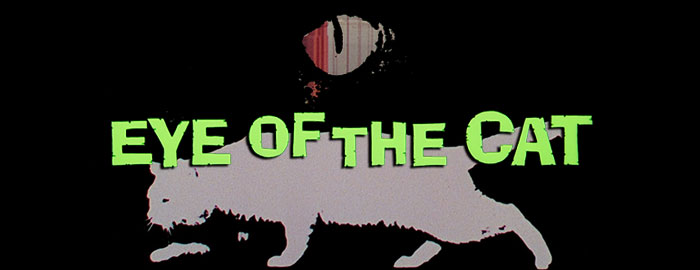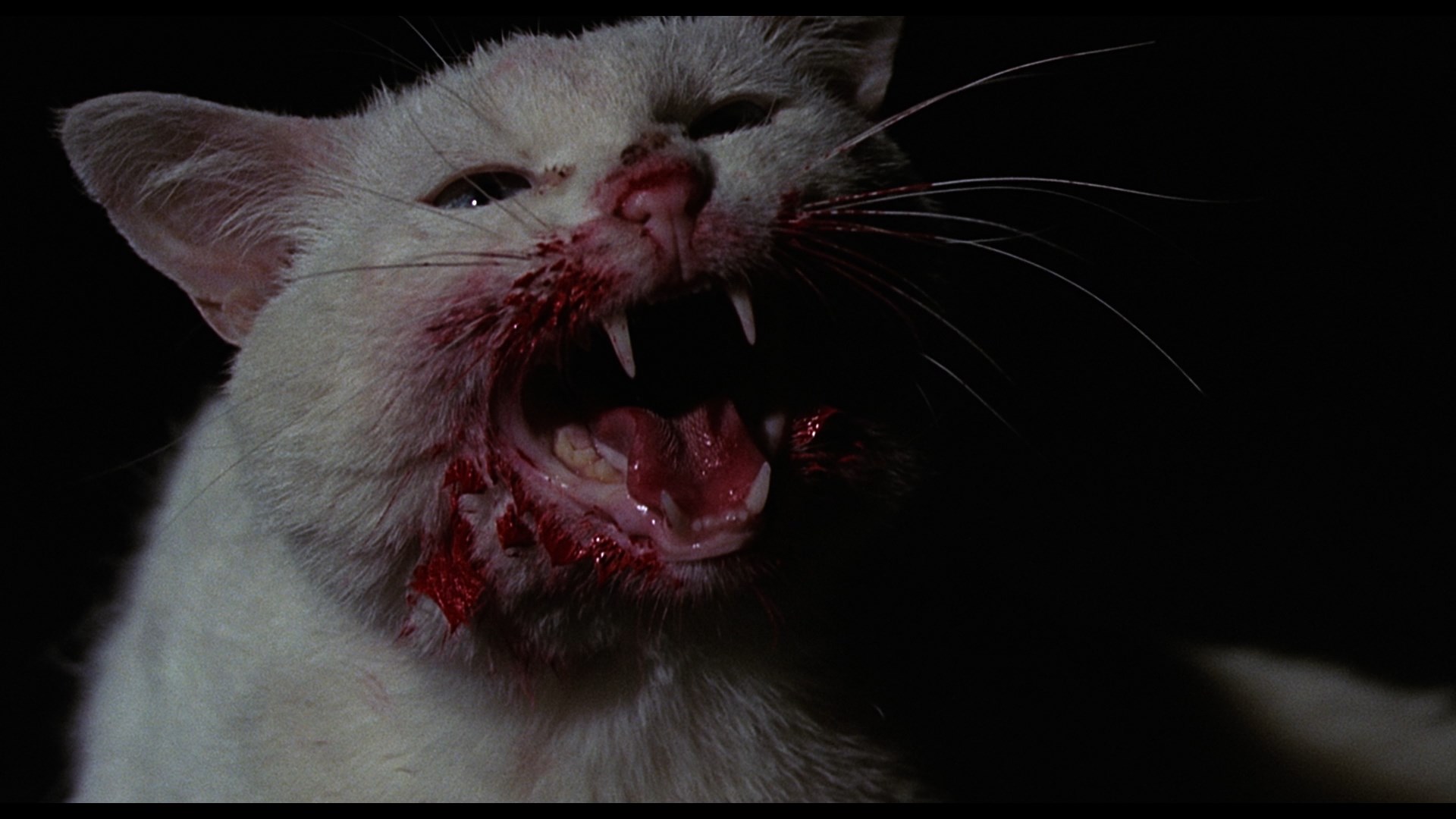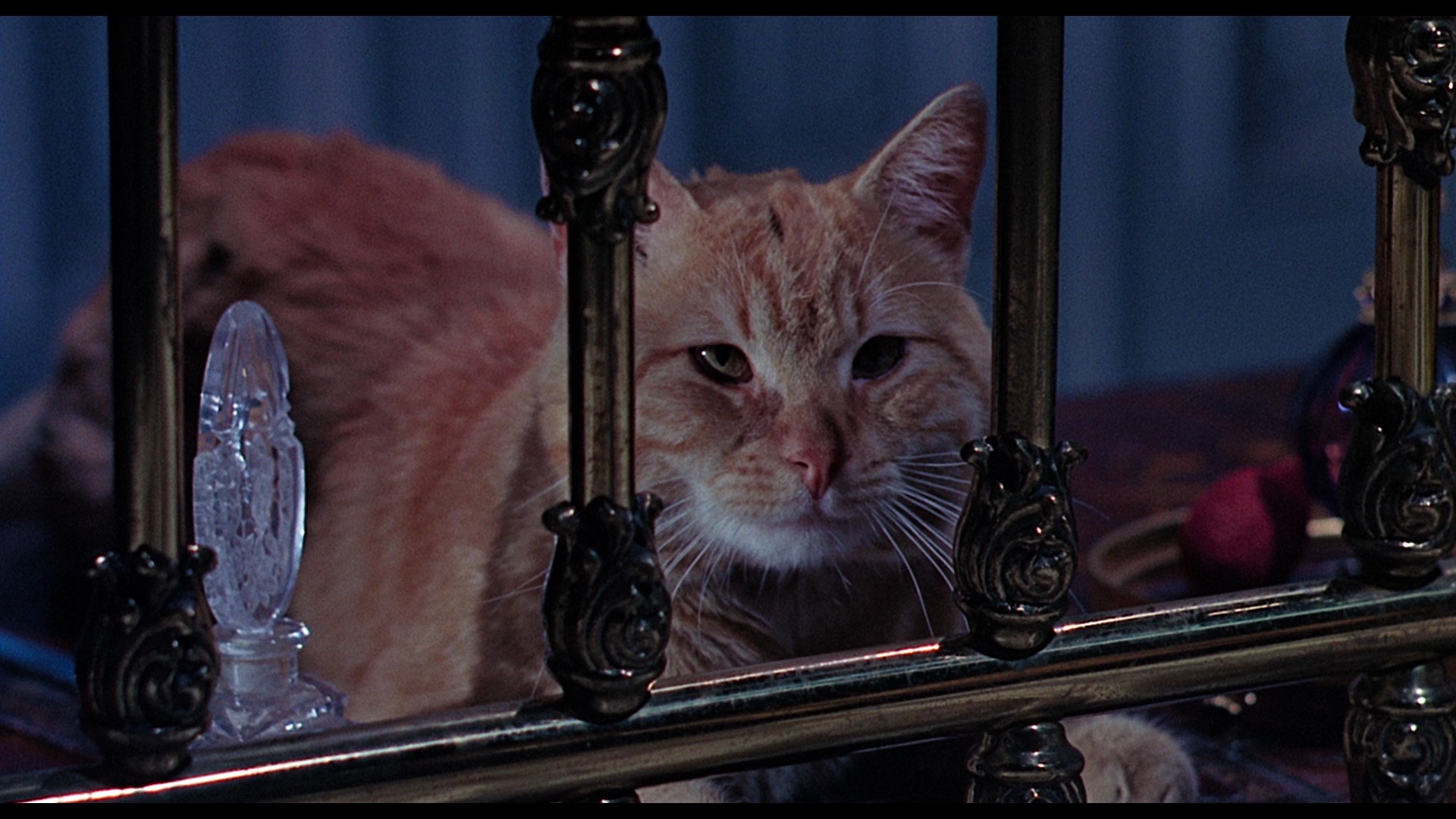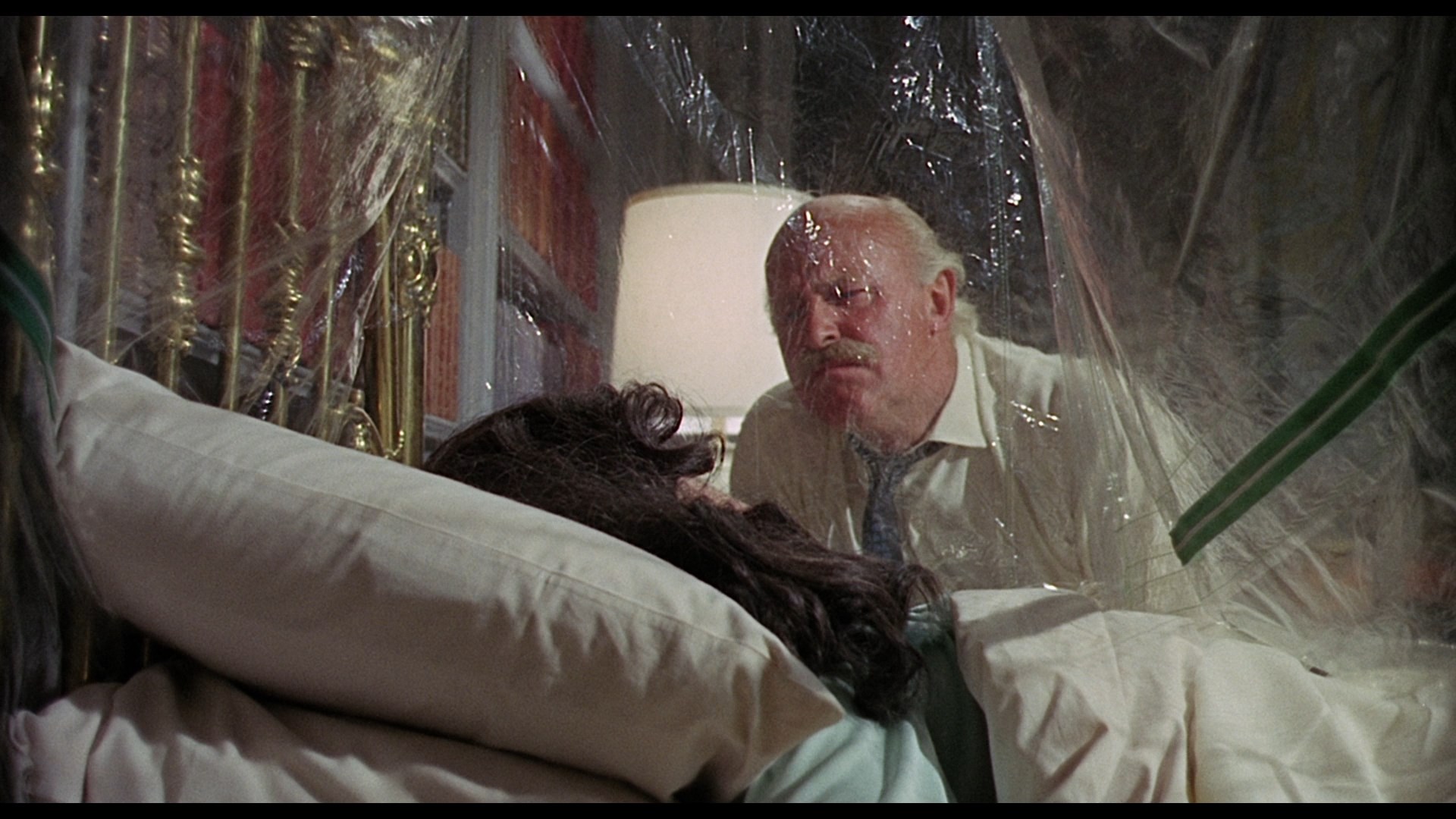

 are hardly menacing themselves, something genre films have gotten around by making them
are hardly menacing themselves, something genre films have gotten around by making them  semi-supernatural avengers as in The Uncanny, Shadow of the Cat, and Tales from the Darkside: The Movie, among others. One of the most feline-crazy of them all is Eye of the Cat, which usually gets categorized as a horror film though it's also a straight-up inheritance scheme thriller that happens to have an animal attack twist.
semi-supernatural avengers as in The Uncanny, Shadow of the Cat, and Tales from the Darkside: The Movie, among others. One of the most feline-crazy of them all is Eye of the Cat, which usually gets categorized as a horror film though it's also a straight-up inheritance scheme thriller that happens to have an animal attack twist.  who had just come off of Madame X and A Lovely Way to Die but would mostly stick with TV, apart from
who had just come off of Madame X and A Lovely Way to Die but would mostly stick with TV, apart from  the occasional Universal one-off like the gloriously insane The Concorde... Airport '79). Unusually for a studio horror film around the time, the film objectifies its two male stars even more than Hunnicutt, seemingly finding any excuse to get them shirtless and soaking wet at every opportunity. The biggest selling point for horror fans at the time was screenwriter Joseph Stefano, who had famously adapted Robert Bloch's Psycho for the 1960 Alfred Hitchcock classic and would serve as the producer and frequent writer for TV's The Outer Limits. That led to a lot of reviews comparing this unfavorably to Hitchcock's film, even though this has absolutely nothing in common with it. However, today it has immense value for its time capsule status, not just for the chance to enjoy the cast (who weren't quite A-listers but do fine work here) but for the colorful depiction of San Francisco counterculture around that time, not to mention a long split-screen opening sequence doing its best to ape the trendy look of The Thomas Crown Affair.
the occasional Universal one-off like the gloriously insane The Concorde... Airport '79). Unusually for a studio horror film around the time, the film objectifies its two male stars even more than Hunnicutt, seemingly finding any excuse to get them shirtless and soaking wet at every opportunity. The biggest selling point for horror fans at the time was screenwriter Joseph Stefano, who had famously adapted Robert Bloch's Psycho for the 1960 Alfred Hitchcock classic and would serve as the producer and frequent writer for TV's The Outer Limits. That led to a lot of reviews comparing this unfavorably to Hitchcock's film, even though this has absolutely nothing in common with it. However, today it has immense value for its time capsule status, not just for the chance to enjoy the cast (who weren't quite A-listers but do fine work here) but for the colorful depiction of San Francisco counterculture around that time, not to mention a long split-screen opening sequence doing its best to ape the trendy look of The Thomas Crown Affair.  and there. Most notably, it reworked the entire climax of the film; presumably the sight of
and there. Most notably, it reworked the entire climax of the film; presumably the sight of  Hunnicut splashed with blood from animal meat and running from an army of cats was too dicey, so instead we get the unintentionally hilarious spectacle of her sans blood being terrified into hysterics by... one cat. Incredibly, this wasn't the most extreme overhaul done by the Universal TV department (who also retooled such films as Kiss of the Vampire, The Phantom of the Opera, The Evil of Frankenstein, the Airport series, The Thing, Psycho III, and many others); the still-reigned champ has to be Two-Minute Warning, the sniper disaster film that had its entire storyline changed into a heist story when it hit the airwaves.
Hunnicut splashed with blood from animal meat and running from an army of cats was too dicey, so instead we get the unintentionally hilarious spectacle of her sans blood being terrified into hysterics by... one cat. Incredibly, this wasn't the most extreme overhaul done by the Universal TV department (who also retooled such films as Kiss of the Vampire, The Phantom of the Opera, The Evil of Frankenstein, the Airport series, The Thing, Psycho III, and many others); the still-reigned champ has to be Two-Minute Warning, the sniper disaster film that had its entire storyline changed into a heist story when it hit the airwaves. also
also  included, and interestingly, it doesn't look the same; though still obviously limited by the SD broadcast source, it's been marginally zoomed to get rid of the strip of tape damage at the bottom and features better contrast with the whites no longer as blown out and more detail now visible. The theatrical cut also comes with a new audio commentary by The Encyclopedia of Fantastic Film and Television editor Kevin Lyons who dives into this one enthusiastically with lots of info about kitty cat horror starting with Edgar Allan Poe, the backgrounds of the cast and crew (especially Stefano), the star quality of Tullia the cat, the joy of horror promotional gimmicks, and the state of genre cinema around the time. In "Pussies Galore" (20m33s), Kim Newman zooms in specifically on feline horror, also using Poe as a jumping-off point to chat about the prevalence of four-legged fear, Stefano's contributions to horror and sci-fi, the connections to Hammer, the challenge of doing thrillers like this in color, Schifrin's score, and Rich's career. Then "Two Evil Eyes" (37m30s) takes an extensive look at the theatrical and TV versions, an interesting dissection of the many, many changes that extended all the way to removing some mildly suggestive dialogue. Also included are the trailer, radio spot, and a different expanded image gallery, while the limited (3,000-unit) edition comes with a new essay by Kasandra O’Connell, samples from the original pressbook, an archival interview with Hunnicutt, and sample critical responses.
included, and interestingly, it doesn't look the same; though still obviously limited by the SD broadcast source, it's been marginally zoomed to get rid of the strip of tape damage at the bottom and features better contrast with the whites no longer as blown out and more detail now visible. The theatrical cut also comes with a new audio commentary by The Encyclopedia of Fantastic Film and Television editor Kevin Lyons who dives into this one enthusiastically with lots of info about kitty cat horror starting with Edgar Allan Poe, the backgrounds of the cast and crew (especially Stefano), the star quality of Tullia the cat, the joy of horror promotional gimmicks, and the state of genre cinema around the time. In "Pussies Galore" (20m33s), Kim Newman zooms in specifically on feline horror, also using Poe as a jumping-off point to chat about the prevalence of four-legged fear, Stefano's contributions to horror and sci-fi, the connections to Hammer, the challenge of doing thrillers like this in color, Schifrin's score, and Rich's career. Then "Two Evil Eyes" (37m30s) takes an extensive look at the theatrical and TV versions, an interesting dissection of the many, many changes that extended all the way to removing some mildly suggestive dialogue. Also included are the trailer, radio spot, and a different expanded image gallery, while the limited (3,000-unit) edition comes with a new essay by Kasandra O’Connell, samples from the original pressbook, an archival interview with Hunnicutt, and sample critical responses.Indicator (Blu-ray)
Scream Factory (Blu-ray)
TV Version: Indicator (Blu-ray)
TV Version: Scream Factory (Blu-ray)
![]()